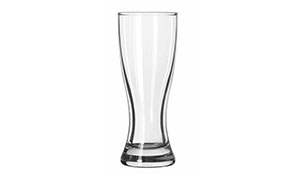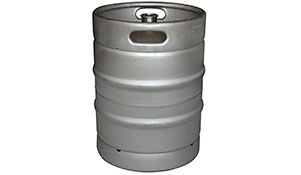Dispense System Consumables
Glass Sanitising Powder
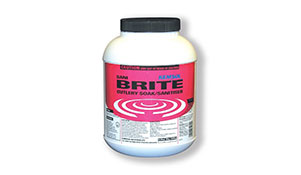
A chlorinated soaking powder that has been specifically designed to break down accumulated mineral build up on glassware and other food impliments routinely exposed to proteins and food compounds. Mineral build up occurs slowly over a period of time on exposed surfaces as glassware and food impliments are regularly used and washed. Regular soaking in a chlorinated poweder will minimise any mineral build up before it becomes excessive and the glassware or impliments needs to be replaced.
Glass Sink Brushes
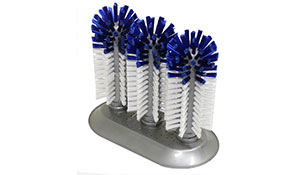
A sink mounted or bucket mounted multiple brush unit used for mechanical loosening of mineral and solids build up on glassware surfaces before they fully bind to the host surface. Once loosened the build up will release and wash away more efficently from exposed surfaces when the item is put through a commercial glass washer unit cycle.
Monopropylene Glycol
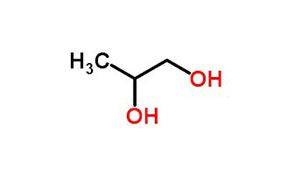
This anti freeze product is rated as food grade and allows the glycol chilled water system to circulate fluids at below zero degree temperaturess without freezing the unit fluid. Auotmotive and other types of glycol are toxic and should not in any circumstances be used in a food area or beer dispense glycol chilled water system.
Beer Line Cleaning Fluid
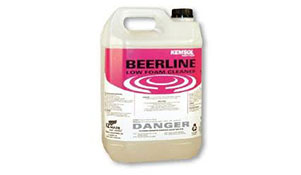
A concentrated alkaline based caustic fluid specifically formulated for hospitality industry beer line and beer tap cleaning. Before use, the beer line cleaning fluid should be diluted in accordance with the manufacturers instructions and once pumped into the system be allowed to soak in the beer lines for a period recommended by the chemical mnaufacturer or a brewery technician. Beer line cleaning fluid is toxic/corrosive and must always be used in conjunction with the correct safety protection equipment specified by the manufacturer i.e. safety glasses and rubber gloves.
Beer Dispense System Parts
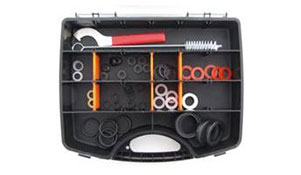 Thirst Aid kit - A plastic compartmentalised container carrying a wide range of the common wearable seals used on tap beer dispense systems. The range covers keg coupler, beer tap, and gas cylinder seals that are most often replaced during routine maintenance. The seals provided in the kit are relatively easy to change out and will in most instances last for a reasonable period of time.
Thirst Aid kit - A plastic compartmentalised container carrying a wide range of the common wearable seals used on tap beer dispense systems. The range covers keg coupler, beer tap, and gas cylinder seals that are most often replaced during routine maintenance. The seals provided in the kit are relatively easy to change out and will in most instances last for a reasonable period of time.
-
All BevTech Solutions technicians carry a comprehensive range of replacement parts and equipment for all types of beer dispense systems including gas systems, cellar equipment, beer tower and chilled water replacement parts. Beer dispense systems are reasonably logical in their design and operation making repairs relatively straight forward to repair once the fault has been located and correctly identified.
Presentation of Tap Beer
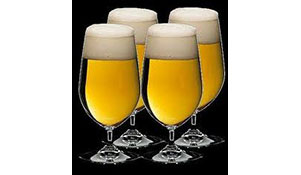 Head Size
Head Size
- When dispensing tap beer the correct head size in the glass should be 5mm to 10mm. An under sized head will make the beer appear flat and unappetising. An over sized head will cause wastage and over fill making the presentation of the beer look unprofessional and the glass look partially filled. A good head will assist the beer by acting as a barrier to the air reducing oxidisation and protecting the beer while it is being consumed enabling the beer to retain its visually appealing characteristics.
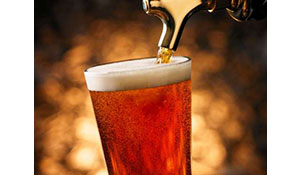 Beer Presentation
Beer Presentation
- After the beer has been dispensed there should be a steady stream of bubbles rising through the beer as the C02 in solution reverts to gas as the beer gradually warms. This reaction helps the beer retain and replenish the head as the beer is being consumed. C02 gas bubbles clustering on the side of the glass after dispensing is generally a sign of a dirty glass with mineral build up.
Fresh Glassware
- To experience·quality tap beer in hygienic conditions a fresh clean glass should always be used for every new serving. Using pre used glassware will be detrimental to the quality of the freshly dispensed beer in both taste and presentation but also in terms of hygiene. Fresh clean glassware will generate a superior head and the aroma will be clearer because no stale beer residue will be present in the glass.
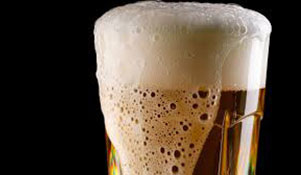 Dispensing Hygiene
Dispensing Hygiene
- Beer is a food product and should be treated as such to ensure optimum quality is consistently delivered to consumers. The beer tap should never be dipped into the beer to prevent cross contamination of oxidised beer and other proteins. Overflowing the glass when dispensing beer will make the glass wet and sticky to use and ultimately unhygienic. When dispensing beer always keep fingers below the rim of the glass to avoid contamination of the beer and the glass. Food grease and other common compounds can be detrimental the beer head and longevity of quality after dispensing.
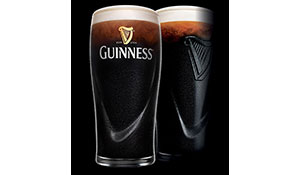 Beer Dispensing Techniques
Beer Dispensing Techniques
- To learn more about the recommended dispensing techniques for Lion BSW beers, Guinness and Stella Artois refer to the 'Pouring Great Beer' brochure. This brochure has the step by step process on how best to·dispense various beers to the high standards intended their brewers.
Glassware Management
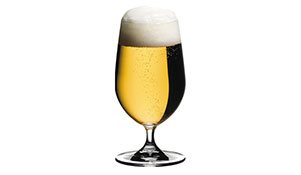 Correct Glassware
Correct Glassware
- Always use branded glassware or beer styled glassware when supplied or if available. Using glassware designed for beer consumption will help ensure that beer consumers are able to appreciate the many characteristics unique only to beer. Correct glassware will assist in presenting the beer as it should be presented with the correct head and the opportunity to smell the aroma given off by freshly dispensed beer.
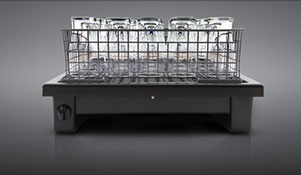 Glassware Storage
Glassware Storage
- All glassware should be stored in a clean, cool, dry area on a clean shelf mat with bottoms facing up. Inverted glassware minimises the risk of dust or debris contamination the inner glass before use. Storing glassware in a refrigerated cabinet can negatively affect head presentation and head retention causing the beer to appear flat due C02 being held in solution for a longer period than intended.
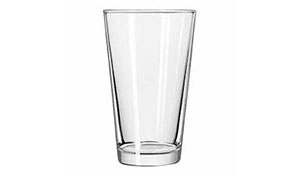 Glassware Appearance
Glassware Appearance
- Before dispensing tap beer the glass should always be checked and should look sparkling and clear. To maintain the sparkling and clear look glassware should be regularly soaked in an approved sanitiser to remove mineral build up. For best results soak glassware for one hour when required checking visually against a good light source rinsing well before reuse.
Stock Best by Dates and Rotation
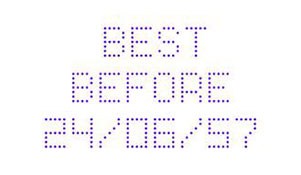 Keg Best by Dates
Keg Best by Dates
- Beer being a food product will always have a best by date on the keg, bottle or packaging. Beer kegs will generally have a best by date located on the side of keg but it may be difficult tfind and read in poor light however the best by date located on the keg top is easier to see and read. Keg tops from opened kegs should always be left sitting on the opened keg for easy brand identification. When filled at a brewery kegs will generally have a 6 week shelf life (while they remain untapped) until the specified best by date.
 Keg Turnover
Keg Turnover
- Kegs stored in cool rooms should be consumed within 7 days after opening tensure freshness and optimum presentation. Ambient temperature kegs used on Icebank chillers should be consumed within 3 days of opening to ensure freshness and optimum presentation. Slow turnover brands should always be purchased in 25 litre kegs to improve the turnover cycle times and assist in maintaining freshness.
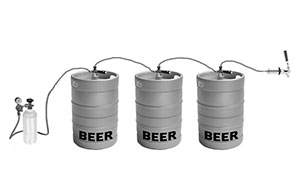 Double Banked Kegs
Double Banked Kegs
- Kegs connected in series to create larger volume banks in high turnover outlets should always be fully exhausted before being replaced with new kegs. Changing part empty kegs on a banked system can cause beer performance and quality issues if not carried out correctly and accurately.
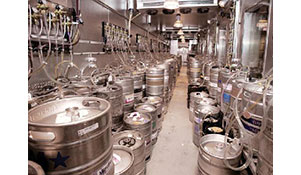 Keg Rotation
Keg Rotation
- When storing kegs before use or sale always use the earliest dated kegs first to ensure consistant product rotation and movement of older kegs. Stack new deliveries at back of the keg rows and move earlier dated kegs tthe front of the row so that they are used first and the beer is consumed before reaching its best before date.
Keg Sizes
- Lion Beer Wines & Spirits kegs are available in three sizes to offer flexibility with keg handling, keg storage to also assist with low volume brand turnover in smaller outlets.
- 50 litre keg
- 25 litre (tall) keg
- 25 litre (squat) keg
Operating Temperatures
 Cool Room
Cool Room
- Keg cool rooms should maintain a temperature range of 0 degrees Celsius to plus 1 degree Celsius. This temperature range will ensure the specified C02 content is held in solution at the correct levels. Beer stored at these temperatures will generally remain stable when dispensed.
 Glycol Chilled Water
Glycol Chilled Water
- Glycol chilled water reservoir tanks should maintain a temperature range of minus 2 degrees Celsius to minus 4 degrees Celsius. This temperature range will help maintain the correct beer line operating temperature from the keg cool room to the point of dispense minimising any warming and C02 breakout due to temperature degradation.
 Icebank Chiller
Icebank Chiller
- Icebank under bar chillers should maintain a temperature range of 0 degrees Celsius to 0.3 degrees Celsius. Icebank chillers rely on the water bath partly freezing to create an ice reserve to keep the water bath chilled. If too cold the entire bath will freeze stopping any heat transfer through the water. If too warm the beer will become frothy and unstable creating unnecessary wastage and excessive beer head.
 Dispensed Beer
Dispensed Beer
- Beer dispensed into a glass should present at plus 2 degrees Celsius to plus 4 degrees Celsius. This is the optimum temperature range to achieve an even balance between cold beer, sensing flavour/aroma·and creating the recommended head size. This temperature range will also assist gradual C02 release as the beer warms contributing toward head retention and glass lacing.
 Keg Pre Chilling Period
Keg Pre Chilling Period
- When using kegs in a temperature controlled environment (cool rooms & keg cabinets) the kegs should be pre chilled for 24 to 48 hours before use. Prechilling will ensure that when a new keg is tapped the beer will dispense at the correct temperature and perform as it is designed to. Under chilled kegs can cause CO2 break out resulting in frothy, warm beer creating unnecessary wastage and excessive beer head.

